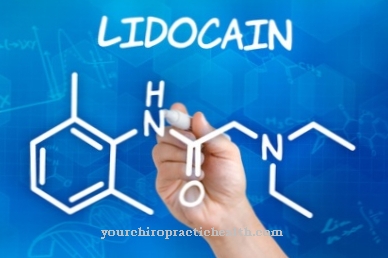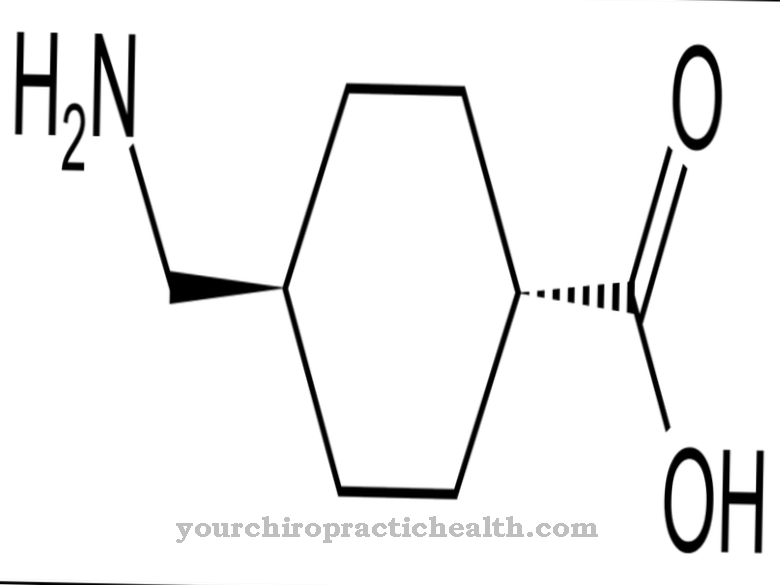phenobarbital is a drug that belongs to the group of barbiturates. It is used in the treatment of epilepsy and in preparation for anesthesia.
What is Phenobarbital?

Phenobarbital is a barbiturate. Barbiturates are drugs that have a hypnotic, narcotic or sedative effect. The name barbiturates is derived from barbituric acid, one of the active ingredients in barbiturates. Barbiturates work biochemically via the so-called GABA receptor.
A distinction can be made between short-acting, medium-long-acting and long-acting barbiturates. Phenobarbital is one of the long-acting barbiturates. Phenobarbital was prescribed as a sleep aid well into the 1960s and 1970s. Due to the considerable side effects and the high potential for dependence, phenobarbital has not been prescribed as a sleep aid since 1992.
Today the drug is used to treat epilepsy. The sedating and anticonvulsant drug is also used in preparation for anesthesia. The synthesis of the active ingredient takes place via a condensation reaction between urea and ethyl phenyl malonic acid diethyl ester.
Pharmacological effect
Phenobarbital is almost completely absorbed by the body after oral and intramuscular administration. The maximum concentrations in the blood are found after oral administration after 6 to 19 hours. In the case of intramuscular administration, the highest concentrations can be found in the blood after 3 to 5 hours. Phenobarbital acts as a sleep aid and sedative. The drug is also used against seizures. The effect is strongly dependent on the dosage.
Like most other barbiturates, phenobarbital works at the GABA receptor. GABA receptors are proteins in nerve cells that can bind the neurotransmitter gamma-aminobutyric acid. This transmitter is also known as GABA. GABA is the main inhibitory neurotransmitter in the human central nervous system (CNS). Just like benzodiazepines, barbiturates such as phenobarbital increase the effect of GABA on the receptor. They also cause the canal to remain open longer after GABA has attached.
At the same time, phenobarbital blocks the AMPA receptors. AMPA receptors are a subset of the glutamate receptors. Glutamate is also an important neurotransmitter. It is exciting. The combination of a GABA inhibition and a blockade of the excitatory effect of glutamate is responsible for the sedating and dampening effect of the phenobarbital.
A plasma concentration of 15-25 μg / ml is required for the drug to have an anticonvulsant effect in the body.
Medical application & use
The main area of application for phenobarbital is epilepsy. The drug is used to treat grand mal, impulsive petit mal and also to treat status epilepticus. Here, however, it is used as an injection solution. Status epilepticus is an unusually long epileptic seizure. Most of the time it is a series of seizures that merge into one another. Status epilepticus is life-threatening and can lead to serious damage.
Phenobarbital is also used as an injection solution in preparation for anesthesia. For a long time the drug was in circulation as a sleep aid. Since 1992, drugs containing phenobarbital have no longer been approved as sleep-promoting agents.
Risks & side effects
Phenobarbital must not be taken if you are hypersensitive to phenobarbital or to other barbiturates. The use of phenobarbital is also contraindicated in the case of acute alcohol, sleeping pills and painkillers poisoning. The same applies to poisoning by stimulating drugs or by depressant psychotropic drugs.
Phenobarbital can cause serious side effects, so that it may only be used after a very careful risk-benefit assessment. Close monitoring must be maintained throughout treatment with phenobarbital.
Often headache, dizziness and nausea occur while taking the drug. Patients may be confused and have a slower response time. Paradoxical states of excitement are also observed. One possible serious consequence of phenobarbital is acute hepatic porphyria. Porphyria is a metabolic disease that is associated with impaired breakdown of the blood pigment heme. Characteristic is an intermittent course with severe abdominal pain and light intolerance reactions. Those affected suffer from colicky abdominal pain, vomiting, nausea, red urine, seizures and psychiatric symptoms such as psychosis.
Serious liver and kidney problems can also develop during treatment with phenobarbital. Severe heart muscle damage is also a possible consequence of the ingestion. People who have had mood disorders in the past, or people whose loved ones have mood disorders, are at higher risk of developing psychiatric side effects.
If phenobarbital is given together with other centrally acting drugs, the effects and side effects of these drugs can be increased. In addition to alcohol, drugs also include painkillers and sleeping pills, allergies and psychotropic drugs.
Phenobarbital also increases the production of drug-breaking enzymes, so that the breakdown of some drugs in the liver is accelerated. Drugs such as thyroid hormones, doxycycline, griseofulvin, oral contraceptives, lamotrigine, corticosteroids or oral drugs to inhibit blood clotting are affected by the loss of effectiveness.
Children whose mothers were treated with phenobarbital during pregnancy have an increased number of malformations. The drug reaches the child via the placenta and causes damage there. Phenobarbital should therefore only be prescribed and taken during pregnancy after careful risk-benefit assessment.
Folic acid deficiency may develop during treatment with phenobarbital. This, in turn, favors malformations in the unborn. If the mother has to take phenobarbital during pregnancy, close monitoring of the development of the unborn child with α-fetoprotein determination and ultrasound is recommended.
Phenobarbital has a high potential for addiction. Withdrawal symptoms have even been described in newborns whose mothers were treated with phenobarbiol.



























